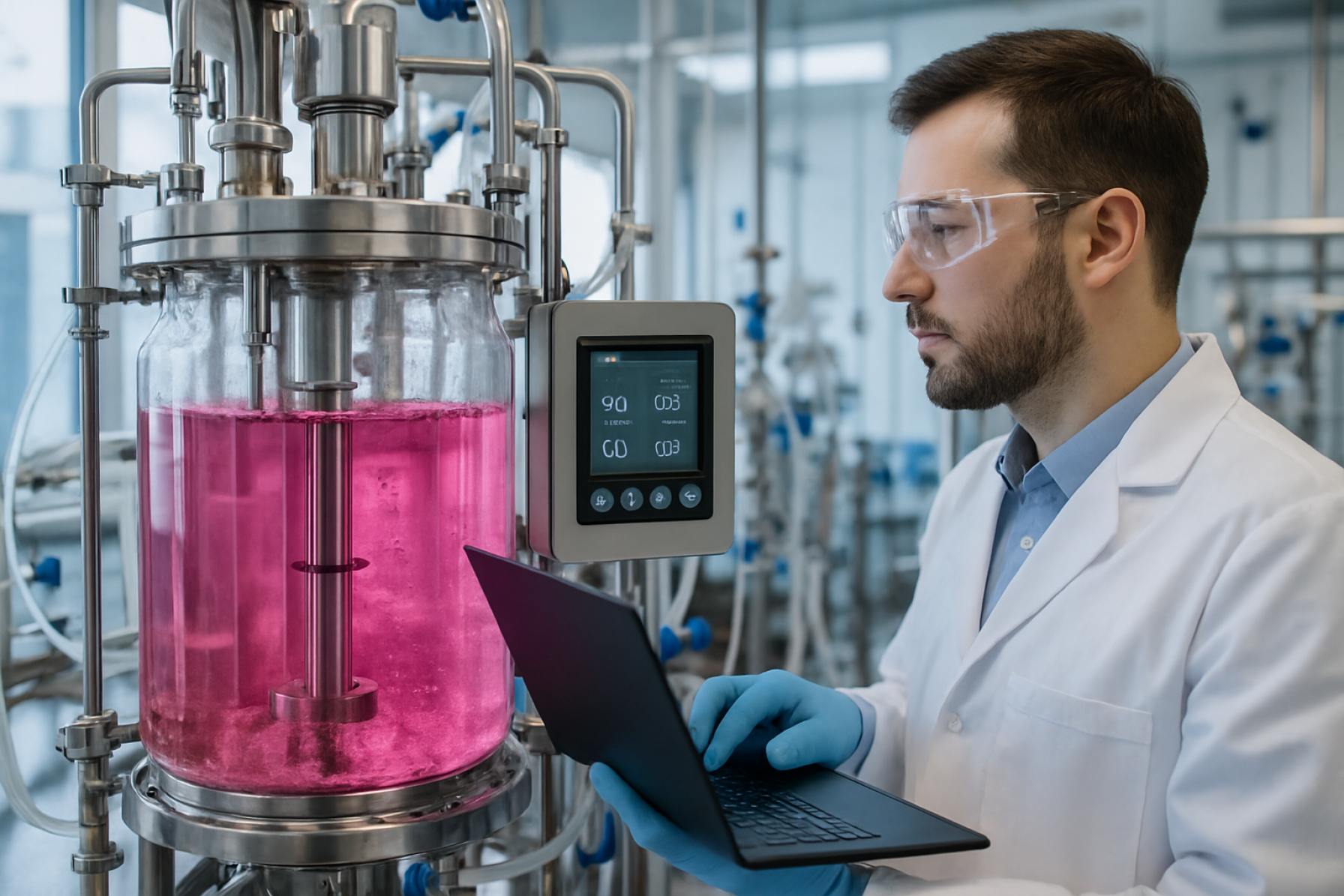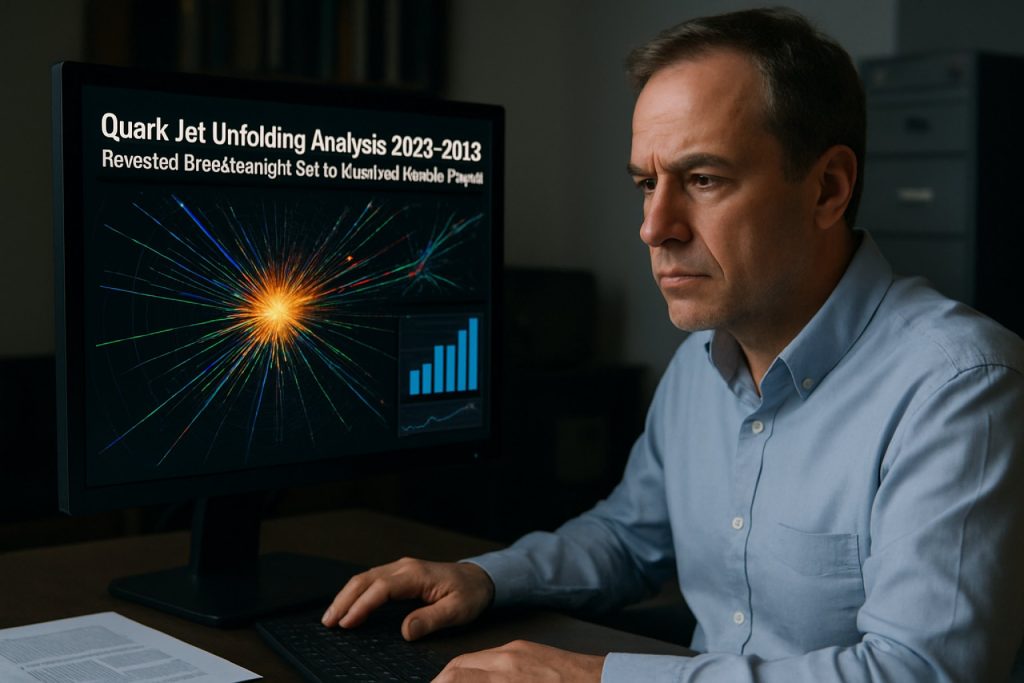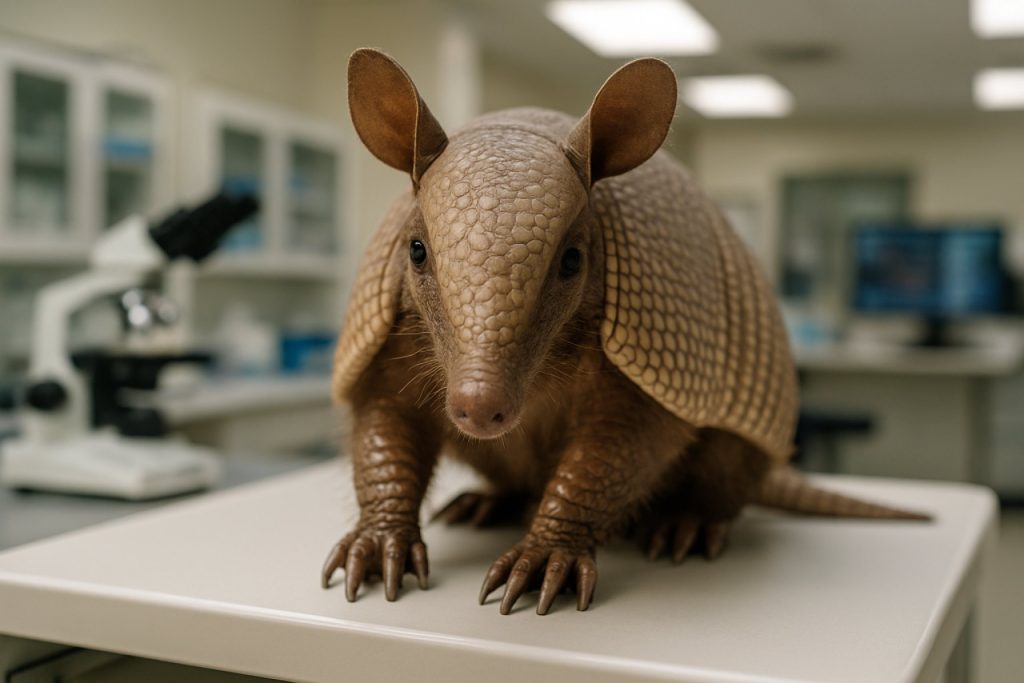Table of Contents
- Executive Summary: Key Trends and Industry Outlook 2025–2029
- Market Size, Growth Forecasts, and Regional Hotspots
- Emerging Bioreactor Technologies: Single-Use, Perfusion, and Beyond
- Automation, AI, and Digital Twins: Revolutionizing Process Control
- Cell Line Development and Optimization: Current Innovations
- Regulatory Landscape and Quality Standards (2025 Update)
- Major Industry Players and Strategic Partnerships
- Supply Chain and Manufacturing Scalability Challenges
- Sustainable Bioproduction: Energy, Waste, and Resource Efficiency
- Future Outlook: Investment, R&D, and Next-Gen Applications
- Sources & References
Executive Summary: Key Trends and Industry Outlook 2025–2029
Cellular bioreactor engineering stands at the forefront of biomanufacturing innovation in 2025, propelled by advances in process automation, scale-up, and integration of digital technologies. The industry is witnessing accelerated adoption of single-use bioreactor systems, spurred by the biopharmaceutical sector’s need for greater flexibility, reduced cross-contamination risk, and faster changeover times. Market leaders such as Sartorius and Cytiva are expanding their portfolios with modular, scalable platforms designed for cell and gene therapy applications, supporting both clinical and commercial manufacturing.
A key trend is the convergence of bioreactor engineering with Industry 4.0 principles. Real-time data analytics, artificial intelligence, and advanced process control are transforming bioreactor operations, enabling predictive maintenance and continuous process optimization. Thermo Fisher Scientific has introduced smart bioreactor solutions equipped with integrated sensors and cloud-based monitoring, supporting remote oversight and rapid troubleshooting. These digital enhancements are expected to drive down operating costs and increase product consistency through 2029.
Continuous bioprocessing is gaining momentum as an alternative to traditional batch methods, aiming to improve efficiency and product quality. Merck KGaA has invested in continuous bioprocessing innovation centers, focusing on high-density perfusion bioreactor systems that enable uninterrupted cell cultivation and protein harvest. This shift is particularly pertinent for monoclonal antibody and recombinant protein production, with industry analysts predicting wider adoption over the next five years as regulatory frameworks evolve to accommodate continuous manufacturing paradigms.
The cell and gene therapy segment is driving demand for closed, automated bioreactor systems capable of handling sensitive cell types at varying scales. Companies such as Lonza are developing customizable bioreactor platforms tailored for autologous and allogeneic therapies, incorporating closed-system operation to meet stringent regulatory and quality requirements.
Looking ahead to 2029, the cellular bioreactor engineering sector is expected to see further innovation in sensor miniaturization, process analytical technologies (PAT), and digital twin modeling. These advances will facilitate real-time process control, robust scale-up from bench to commercial scale, and faster time-to-market for advanced therapeutics. Collaboration between equipment manufacturers, biopharma companies, and regulatory authorities will be critical in setting new standards and ensuring the safe expansion of biomanufacturing capacities worldwide.
Market Size, Growth Forecasts, and Regional Hotspots
The global cellular bioreactor engineering market is undergoing significant expansion as demand intensifies for biomanufacturing solutions in pharmaceuticals, regenerative medicine, and the emerging field of cultivated proteins. In 2025, the market is characterized by robust investment in advanced bioreactor systems, with a pronounced shift toward automation, scalability, and process analytical technology (PAT) integration. Major equipment suppliers are reporting increased orders for both single-use and stainless-steel bioreactors, driven by the biopharmaceutical sector’s continual growth and the rapid scaling-up of cell and gene therapy production.
For example, Sartorius noted double-digit growth in its Bioprocess Solutions division in 2024, emphasizing the surging demand for modular, scalable bioreactor platforms. Similarly, Thermo Fisher Scientific continues to expand its bioprocessing manufacturing capabilities, launching new bioreactor technologies aimed at flexible and high-throughput cell culture. These developments reflect the market’s focus on flexible, multipurpose systems capable of supporting both research-scale and commercial production.
In terms of market size, Europe’s regulatory environment and infrastructure remain strong drivers, with the region serving as a hub for clinical-stage cell therapy manufacturing. Companies like Eppendorf are investing in new bioprocessing facilities in Germany and the UK to meet demand for small- to mid-scale bioreactors, supporting rapid process development and GMP-compliant manufacturing. North America, led by the United States, continues to dominate in the adoption of large-scale bioreactor systems for biologics and advanced therapies, buoyed by regulatory support and the presence of major biotechnology clusters.
Asia-Pacific is emerging as a regional hotspot, particularly China, South Korea, and Singapore, where government incentives and infrastructure projects are spurring new manufacturing capacity. Cytiva reports significant expansion of its manufacturing footprint in the region, with new facilities designed to produce bioreactor systems and support local supply chains.
Outlook for the next few years remains bullish. The industry is expected to see ongoing innovation in bioreactor sensor technology, data-driven process control, and closed-system configurations. As demand grows for personalized medicine and sustainable biomanufacturing, both established and emerging markets are likely to accelerate adoption of next-generation bioreactor platforms, solidifying cellular bioreactor engineering as a critical pillar of the life sciences ecosystem.
Emerging Bioreactor Technologies: Single-Use, Perfusion, and Beyond
Cellular bioreactor engineering is experiencing rapid innovation in 2025, with a particular emphasis on single-use systems, advanced perfusion technologies, and the integration of automation and digital controls. These developments are driven by the expanding demand for cell and gene therapies, monoclonal antibodies, and vaccines, which require flexible, scalable, and contamination-resistant manufacturing platforms.
Single-use bioreactors (SUBs) remain at the forefront of this transition. In 2024, Cytiva introduced the Xcellerex X-platform bioreactors, featuring enhanced mixing, improved sensor integration, and larger working volumes, supporting both research and commercial-scale manufacturing. Similarly, Sartorius has advanced its BIOSTAT STR single-use bioreactor line, integrating robust control systems for real-time process monitoring and adaptive feeding strategies—key for optimizing cell growth and product quality in dynamic production environments.
Perfusion technology is another pivotal area, enabling continuous culture and product harvest while maintaining high cell densities. Thermo Fisher Scientific recently expanded its HyPerforma DynaDrive SUB series to offer fully integrated perfusion-ready systems with automated cell retention devices and scalable designs from 50 L to 5,000 L, addressing the needs of both clinical and commercial manufacturing. In parallel, Eppendorf has released benchtop perfusion-ready bioreactors targeting process development for adherent and suspension cell lines, providing flexibility for high-throughput screening and rapid process optimization.
Digitalization and process analytical technology (PAT) integration are also shaping the future of cellular bioreactor engineering. Companies like Merck KGaA (MilliporeSigma in the US) are advancing closed-loop control systems, combining real-time data analytics, advanced sensors, and artificial intelligence to predict and optimize cell culture parameters. This digital transformation is expected to further reduce batch failures, improve reproducibility, and accelerate time-to-market for cell-based products.
Looking ahead, the convergence of single-use, perfusion, and intelligent automation technologies is poised to redefine cellular bioreactor engineering. Over the next few years, industry leaders are expected to focus on scaling up modular, plug-and-play bioreactor platforms and further enhancing connectivity for end-to-end digital bioprocessing. Collectively, these advancements will enable more agile, sustainable, and cost-effective manufacturing solutions for the rapidly evolving biopharmaceutical landscape.
Automation, AI, and Digital Twins: Revolutionizing Process Control
Cellular bioreactor engineering is undergoing rapid transformation as automation, artificial intelligence (AI), and digital twin technologies become increasingly central to process control. In 2025, leading bioprocessing companies and equipment manufacturers are deploying these advanced tools to optimize cell culture, enhance reproducibility, and accelerate biomanufacturing innovation.
Automation is now foundational in both research and industrial-scale bioreactors, enabling precise control of environmental parameters and reducing manual intervention. Companies such as Sartorius and Eppendorf SE have expanded their automated bioreactor portfolios to include features such as real-time monitoring, adaptive feeding strategies, and integrated robotics. These systems can dynamically adjust temperature, pH, dissolved oxygen, and nutrient supply, minimizing variability and human error.
AI-powered analytics are increasingly integrated into process control platforms. For instance, Cytiva highlights the use of AI algorithms to process sensor data, predict critical quality attributes, and provide early warning of deviations. Such predictive capabilities are pivotal for complex cell therapy and biologics production, where subtle shifts in bioprocesses can affect product yield and quality. Additionally, Thermo Fisher Scientific Inc. is actively developing digital solutions that leverage machine learning for ongoing process optimization and troubleshooting.
Digital twins—virtual replicas of physical bioreactor systems—are a transformative development in 2025. These digital models are synchronized with real-time operational data, enabling simulation, process optimization, and troubleshooting before any physical changes are made. Sartorius, in collaboration with Siemens, has launched digital twin platforms that allow users to model bioprocess scenarios, forecast outcomes, and perform virtual scale-up studies. This approach reduces development timelines and enhances technology transfer between R&D and manufacturing.
Looking forward, the convergence of automation, AI, and digital twins is expected to yield increasingly autonomous bioreactor systems capable of self-optimization and real-time decision-making. This will be particularly impactful for emerging modalities like cell and gene therapies, where process consistency and speed are critical. As bioprocessing facilities invest in integrated digital ecosystems, the next few years will likely see broader adoption of cloud-based platforms, remote operation, and advanced cybersecurity measures—paving the way for a new era of smart, resilient, and scalable cellular biomanufacturing.
Cell Line Development and Optimization: Current Innovations
Cellular bioreactor engineering is undergoing rapid transformation in 2025, with an emphasis on scalability, automation, and process intensification to meet growing demands across biopharmaceutical, cell therapy, and cultured meat sectors. Recent advancements are characterized by the integration of next-generation sensors, digital control systems, and novel bioreactor designs that support high-density cell cultures and continuous manufacturing.
Single-use bioreactors continue to gain traction due to their flexibility and reduced risk of cross-contamination. Major manufacturers such as Sartorius and Thermo Fisher Scientific have recently introduced scalable platforms supporting volumes from benchtop to commercial production, enabling seamless scale-up of optimized cell lines. The integration of advanced monitoring—such as Raman spectroscopy and inline metabolite analysis—is enabling real-time process control, driving batch-to-batch consistency and improved yields.
Continuous bioprocessing is becoming increasingly mainstream, with companies like Cytiva offering perfusion-enabled bioreactor systems that maintain optimal growth conditions and maximize protein production. These systems are particularly suited for high-value biologics, where maintaining cell viability and productivity over extended periods is crucial. The implementation of advanced control software and automation, as seen in Eppendorf’s BioFlo® 320, is reducing manual interventions and enabling fine-tuned, reproducible process parameters.
- Process intensification is further realized through the adoption of high-density cell culture techniques—such as fed-batch and perfusion modes—now supported by proprietary media formulations and hardware innovations from Merck KGaA. These approaches are delivering significantly higher titers while reducing manufacturing footprints.
- Data-driven optimization is accelerating, with digital twins and machine learning algorithms being incorporated for predictive process modeling. Companies like Sartorius are expanding their analytics suites to support real-time bioreactor optimization and troubleshooting.
- Outlook (2025 and beyond): The next few years will see increased convergence of automation, single-use technologies, and data analytics, supporting faster cell line development and more robust biomanufacturing pipelines. There is also a strong push toward closed, modular systems for point-of-care cell therapy manufacturing, as exemplified by ongoing initiatives from Lonza.
Collectively, these innovations in cellular bioreactor engineering are setting new standards for efficiency, process control, and scalability, directly impacting the pace and reliability of cell line development and optimization.
Regulatory Landscape and Quality Standards (2025 Update)
The regulatory landscape for cellular bioreactor engineering in 2025 is evolving rapidly, reflecting both technological advancements and the increasing complexity of cell-based bioproduction. Regulatory agencies worldwide are intensifying scrutiny on bioreactor design, automation, and process control, aiming to ensure product safety, consistency, and scalability—particularly for applications in cell and gene therapies, cultured meat, and advanced biologics manufacturing.
In the United States, the U.S. Food and Drug Administration (FDA) continues to update guidance on Good Manufacturing Practice (GMP) requirements for biomanufacturing platforms, explicitly referencing closed-system bioreactors and single-use technologies. The FDA’s 2024 draft guidance for advanced therapy medicinal products (ATMPs) emphasizes the importance of real-time monitoring, traceability, and robust quality management systems in cellular bioreactor operations. The agency has also piloted collaborative efforts with industry to standardize digital data capture and process analytics for automated bioreactor systems.
Similarly, the European Medicines Agency (EMA) has reinforced its position through the revision of GMP Annex 1, mandating risk-based approaches for contamination control and requiring validated closed bioreactor systems, especially for autologous and allogeneic cell therapies. The EMA’s “Guideline on the quality, non-clinical and clinical aspects of medicinal products containing genetically modified cells” now incorporates specific recommendations for in-line bioprocess monitoring and automated cleaning validation.
Industry consortia such as International Society for Pharmaceutical Engineering (ISPE) and Biotechnology Innovation Organization (BIO) are providing harmonized frameworks and best practices regarding the integration of Process Analytical Technology (PAT) and Quality by Design (QbD) principles for bioreactor engineering. These initiatives are influencing regulatory perspectives, encouraging greater adoption of digital twins, artificial intelligence-driven process control, and advanced sensor technologies within bioreactor platforms.
Manufacturers are responding by optimizing their bioreactor offerings to meet evolving standards. For example, Sartorius and Cytiva are investing in automated, scalable, and modular bioreactor systems with integrated PAT tools and digital connectivity. These systems facilitate compliance with data integrity, traceability, and process control requirements. Similarly, companies such as Eppendorf are focusing on single-use bioreactor technologies designed for GMP environments, reducing contamination risks and streamlining validation.
Looking ahead, the regulatory landscape is expected to become more prescriptive regarding data management, artificial intelligence integration, and sustainability in bioreactor engineering. As the field matures, regulators are likely to issue more detailed technical standards for digitalized and modular bioreactor systems, with a strong emphasis on interoperability, environmental impact, and lifecycle management. Stakeholders should anticipate continued collaboration between regulatory bodies, industry groups, and technology providers to address emerging challenges and opportunities in cellular bioreactor engineering.
Major Industry Players and Strategic Partnerships
The cellular bioreactor engineering sector is experiencing accelerated activity as global demand for cell-based products—ranging from cultivated meat to advanced therapies—drives innovation and expansion. In 2025, several major industry players are shaping the market through strategic investments, partnerships, and technological advancements.
Sartorius AG, a longstanding leader in bioprocess solutions, continues to expand its bioreactor portfolio, emphasizing scalable, automated systems for both research and commercial manufacturing. The company’s Ambr® and BIOSTAT® bioreactors are widely adopted in cell therapy and biopharmaceutical production, enabling high-throughput process development and robust scale-up. Sartorius is also actively collaborating with emerging cellular agriculture companies to further optimize bioreactor platforms for novel applications, such as cultured meat and precision fermentation (Sartorius).
Eppendorf SE maintains a strong focus on modular, single-use bioreactor systems. In 2025, Eppendorf has intensified partnerships with biotechnology companies to accelerate cell line development and streamline GMP manufacturing. Their BioBLU® single-use vessels are now standard in several contract manufacturing organizations (CMOs) specializing in regenerative medicine and vaccine production. Eppendorf’s integration of advanced control software and data analytics is a key differentiator, supporting real-time process optimization (Eppendorf).
Thermo Fisher Scientific Inc. is at the forefront of large-scale bioreactor deployment for cell and gene therapy, with its HyPerforma™ and Quantum™ platforms gaining traction among clinical-stage and commercial manufacturers. In recent years, Thermo Fisher has formed strategic alliances with cell therapy developers to co-develop closed, automated bioprocessing suites. Their collaborations are geared towards reducing manufacturing costs and minimizing contamination risks, critical factors for market viability in advanced therapy medicinal products (ATMPs) (Thermo Fisher Scientific).
A notable trend is the emergence of targeted partnerships bridging hardware engineering and cellular agriculture. For example, ABEC, Inc. has recently partnered with cultivated meat producers to tailor large-scale bioreactor systems for food-grade applications, addressing unique requirements in scalability and cost-effectiveness (ABEC). Such alliances are expected to multiply as the industry moves towards commercial-scale production of alternative proteins and personalized therapeutics.
Looking ahead, the cellular bioreactor engineering landscape will likely see deeper collaborations between bioprocess technology leaders and cell-based product innovators, with continued emphasis on automation, digitalization, and sustainable manufacturing solutions.
Supply Chain and Manufacturing Scalability Challenges
Cellular bioreactor engineering is undergoing rapid transformation as the biomanufacturing industry scales up to meet rising global demand for cell-based medicines, cultured proteins, and regenerative therapies. In 2025, the sector faces acute supply chain and manufacturing scalability challenges, driven by technological, logistical, and regulatory complexities.
A central challenge lies in the reliable sourcing and integration of high-performance bioreactor systems, particularly as manufacturers transition from laboratory-scale to commercial-scale production. Vendors such as Eppendorf SE and Sartorius AG are expanding their portfolios with modular, scalable bioreactor platforms, yet the industry reports persistent bottlenecks in the availability of critical components, including single-use bioreactor bags and specialized sensors. For example, Cytiva acknowledges ongoing global supply chain uncertainties affecting lead times for disposable bioprocessing products, emphasizing the need for multisource strategies and local manufacturing expansion.
Capacity constraints are further compounded by the rapid adoption of advanced cell therapies and cellular agriculture products. In 2025, CDMOs (contract development and manufacturing organizations) like Lonza and WuXi Biologics are investing in expanded bioreactor farms, but the pace of infrastructure deployment often lags behind market demand. The scaling up of adherent and suspension cell cultures requires not only larger vessel volumes—sometimes exceeding 2,000 liters—but also advanced process automation and real-time process analytical technology (PAT). These requirements intensify demand for skilled operators and engineers, creating talent shortages in key regions.
Transport and logistics also present new hurdles, particularly for single-use bioreactor systems that are sensitive to temperature, humidity, and handling during transit. Companies such as Thermo Fisher Scientific are responding by establishing regional distribution hubs and digital tracking solutions to minimize the risk of supply chain disruptions.
Looking ahead, the outlook for cellular bioreactor engineering emphasizes supply chain resilience through diversification and digitalization. Leading manufacturers are accelerating investments in vertically integrated supply chains and smart manufacturing facilities. For instance, Merck KGaA is deploying digital twins and predictive analytics to optimize bioreactor utilization and anticipate component shortages. The next few years are poised to see increased standardization of bioreactor components, fostering interoperability and faster technology transfer between sites, ultimately supporting more robust, scalable, and agile biomanufacturing ecosystems.
Sustainable Bioproduction: Energy, Waste, and Resource Efficiency
Cellular bioreactor engineering is at the forefront of making bioproduction more sustainable by optimizing energy consumption, minimizing waste, and driving resource efficiency. In 2025, the sector is witnessing rapid innovation, particularly in the design and operation of large-scale bioreactors for pharmaceuticals, cultivated meat, and industrial biotechnology.
One key development is the widespread adoption of single-use bioreactor systems, which reduce water and energy requirements associated with traditional stainless-steel cleaning and sterilization. Sartorius and Thermo Fisher Scientific have both expanded their portfolios of scalable, single-use bioreactors, offering solutions that streamline changeovers and limit cross-contamination risks, thereby saving both resources and operational time.
Process intensification is another major trend. Companies are deploying perfusion technologies and continuous bioprocessing to increase product yields per unit volume and reduce waste. Cytiva reports that their Xcellerex bioreactor line enables high-density cell cultures with more efficient nutrient utilization, resulting in less media consumption and smaller waste streams compared to batch processing.
Energy efficiency improvements are also underway. Advanced process control, real-time monitoring, and data analytics are being integrated into bioreactor operations. Eppendorf highlights that their BioBLU single-use bioreactors utilize precise agitation and aeration controls, reducing energy use by up to 25% in pilot-scale production. Such technologies are expected to become industry standard over the next few years, driven by both cost and sustainability imperatives.
Waste valorization is also gaining momentum. Companies like Novozymes are engineering bioprocesses to convert side-streams and byproducts into valuable co-products, such as biofuels or feed additives, reducing overall environmental impact.
Looking forward, the field is moving toward integrated digital bioprocessing platforms that allow real-time resource optimization and predictive maintenance, further enhancing sustainability. As regulatory and market pressures mount, these innovations in cellular bioreactor engineering are poised to set new benchmarks for energy, waste, and resource efficiency across bioproduction sectors through 2025 and beyond.
Future Outlook: Investment, R&D, and Next-Gen Applications
Cellular bioreactor engineering is undergoing a pivotal transformation as investments and research and development (R&D) focus intensively on scaling, automation, and next-generation applications for both biopharmaceuticals and cellular agriculture. In 2025 and the coming years, industry leaders and innovative startups are driving advancements to address demands in drug manufacturing, cell therapy, and sustainable food production.
Investment in bioreactor technology remains robust. Major bioprocess equipment suppliers, such as Sartorius and Thermo Fisher Scientific, have announced significant capacity expansions and R&D initiatives to address surging demand for single-use and automated bioreactor systems. These investments are expected to accelerate the adoption of closed, scalable systems essential for producing advanced therapies and cultured proteins at commercial scales.
Notably, the focus has shifted towards modular, flexible bioreactor platforms that support high-throughput screening and continuous processing. Companies like Eppendorf are developing integrated automation solutions that enable real-time monitoring and adaptive control, enhancing reproducibility and reducing human error. In parallel, digitalization efforts—incorporating data analytics and machine learning—are being prioritized to optimize process parameters, reduce batch failures, and improve yield consistency.
The cellular agriculture sector is also a focal point for next-gen bioreactor engineering. Firms such as UPSIDE Foods are scaling up bioreactor capacity for cultivated meat, aiming to achieve cost parity and regulatory approval for mainstream market entry. UPSIDE Foods’ commercial-scale facility, designed to run 2,000-liter bioreactors, exemplifies the trend toward larger volume, food-grade systems engineered for cell-based protein production.
Looking ahead, the outlook for cellular bioreactor engineering is marked by several key trends for 2025 and beyond:
- Widespread adoption of single-use and hybrid bioreactor systems to enable faster product changeovers and minimize contamination risks.
- Integration of artificial intelligence-driven process analytics for predictive control and real-time quality assurance.
- Increased investment in next-generation materials and sensor technologies to support novel cell types and sensitive bioprocesses.
- Collaborations between equipment manufacturers and therapy developers to co-engineer platforms tailored to emerging modalities, such as gene-edited cells and complex biologics.
In summary, 2025 is set to be a defining year for cellular bioreactor engineering, with sustained investment, R&D breakthroughs, and the emergence of scalable, intelligent systems that will support both medical and food innovation at unprecedented levels.











